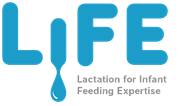A new method for determination of human milk oligosaccharides (HMO)
Quantitative determination of non-lactose milk oligosaccharides
Austin S, Bénet T
Non-lactose oligosaccharides (NLO) in milk vary across species, while they are not very abundant in cow milk, the concentration of human milk oligosaccharides (HMO) can reach as high as 20g/l. They are not completely absorbed in the infant’s digestive tract, and while their role is still being studied some of their benefits include preventing pathogens from binding to the host cell surfaces, and acting as substrates for developing the infant’s gut microbiome. Many different approaches have been used for the quantitative determination of HMO, however results are not well comparable between studies, methods are generally poorly validated (if at all), and accessing good quality HMO standards is very difficult. This work describes a methodology based on labelling the HMO with a fluorescent tag and analyzing the tagged HMO by liquid chromatography with fluorescence detection. The method offers several advantages including: a) it does not require extensive purification of oligosaccharides prior to analysis; b) by adding a fluorescent tag to HMOs, it enables the quantitative determination of the oligosaccharides in the absence of the HMO standard; c) it allows the determination of a large number of HMOs; d) it has been extensively validated.
Anal Chim Acta. 2018;1010:86-96. doi: 10.1016/j.aca.2017.12.036.
